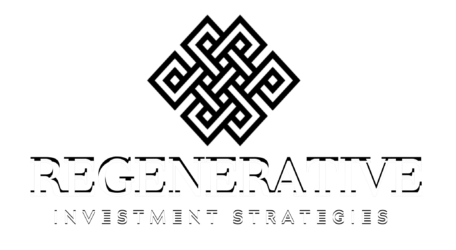WWRDD?
No, not a clever mouth noise for “word”. What Would Ron DeSantis Do?
This was the question posed to me by a client firm. It wasn’t so much a question about Gov. DeSantis specifically, although that has to be on their mind given emerging state-level reverse mandates prohibiting investments in “woke capitalism”. They are earnestly trying to thoughtfully prepare for all angles of pushback against doing anything ESG-integrated that could limit their addressable market or harm their standing in the community of investment managers.
What makes the question interesting is that many firms are just now fielding it for the first time as though this is a novel challenge. It may be new(ish) in the political sphere but this was simply the way it always was in the capital markets. Even the concept of launching an anti-ESG investment firm is day old bread since there has been a “vice’ fund for two decades now.
The “two decks” dilemma
Anyone who has spent a day much less a career on Wall Street knows that banking, brokering, investing, and insuring are about as fiscally and politically conservative as industries get. Even rightward-leaning industries like defense & aerospace and oil rely heavily on a large and heavy-handed government for much of their existence. The people investing or protecting the money have been Friedmanesque in their prioritization of economic interest above all else. And even with those in control of oligarch-levels of family and institutional wealth with heavy progressive dispositions, the rule of thumb has always been maximize economic profit and then go do good with the proceeds through charitable and other pursuits.
For a good chunk of the 40-ish years SRI and ESG have been a tangible presence, there were firms with strong but closely held bona fides in sustainable and responsible investing. They would travel to meetings with clients, or trusted advisors, or gatekeepers with a book or a slide deck discussing in the rawest capitalist terms their process built around business ratios, economic factors, operational risk, credit quality, etc. But, pass the secret handshake under the table and out of sight, and a second book would come out that discussed environmental risk, human dignity, access to basic resources and opportunity, and managing the economic risks and opportunities uncovered by viewing the investment portfolio through an ESG lens.
In some cases the firms were running two products and two versions of the process — one on the menu and one only if you knew the chef. In other cases it was one product and two versions of the story — one version just conveniently leaving out certain details about how they managed money.
Very often the reason for this duality was because these firms didn’t want to get pigeonholed as one of “those managers”. There was an otherness to ESG that automatically kicked managers into another category even if the root of the investment processes and the risk and return results were competitive with or even better than the non-ESG options. Self-identifying as an ESG manager was effectively self-selecting out of business opportunities because the near-universal assumption was ESG = concessionary, and a good marketing strategy is one built on removing barriers to doing business, not erecting them. Why emphasize something that is just going to trigger objections and pushback?
Today the script has flipped. Some level of ESG involvement or at least conversance has become table stakes for even the most generic and non-ESG of searches. This is a very new phenomenon, and the vast majority of strategies and investment shops addressing these ESG asks weren’t doing so five or ten years ago. The community of investment firms in the SRI/ESG space was small enough that those of us practitioners who were active in that space a decade or more ago could usually list them and their strategies out from memory, including the ones that had the off-menu ESG solutions. They are the ones who are seasoned at addressing this new wave of old-fashioned pushback, so that is a bonanza for the large firms that have swept up many of them to make part of their broader platforms. For the rest who are recent joiners in the ESG discussion, this is the first time they have been on the receiving end of both casual and aggressive attacks on the principles of responsible investing.
Past performance may not be a guarantee of future results in the capital markets, but history is always instructive because things have a way of repeating themselves. This is a great moment to listen to the elders. Maybe the response to WWRDD is WWKLDD — What Would Kinder, Lydenberg and Domini (KLD) Do?

